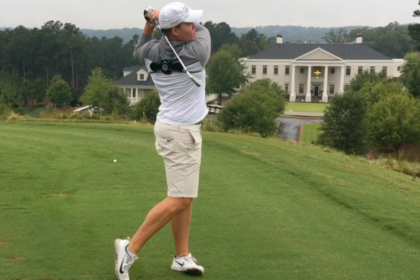Your Cart is Empty
STANDARD AND EXPRESS SHIPPING WORLDWIDE!
STANDARD AND EXPRESS SHIPPING WORLDWIDE!
STANDARD AND EXPRESS SHIPPING WORLDWIDE!
November 08, 2021 3 min read

This article is co-written with Zach Parker. Zach is the former director of golf at the Gary Gilchrist and Bishop’s Gate golf academies. Zach is a golf coach, an expert in skill acquisition, and he has years of experience setting up effective training scenarios for golfers of varying abilities.
The act of working on your golf game is often referred to as practice. This is a problem, however, because the word “practice” infers repetition or rehearsal. But golf is a sport that has a constantly changing playing surface, varying conditions and mixed skill requirements. So, if we use the traditional practice model of hitting the same shot over and over again, then we have a complete mismatch between our training and the requirements of the sport. This can lead to the following frustrations
These annoyances can lead to overall disappointment at underperforming and falling short of expectations developed in practice sessions. The most likely root cause of this issue is having no structure and the wrong context to your training, mistakenly focusing on repeating the same shot over and over again.
So let’s try shifting our approach and aim to train and not simply practice. By introducing these three key principles to your training, we can not only get better at golf, but do so a way that is more efficient and more fun too! For more detailed insight to this topic, check out the podcast that Zach recently recorded with Game Like Training Golf
Dr. Robert Bjorks suggests that the theory of spacing dates back centuries and simply means taking some time between training or learning tasks. By spacing things out the learner is forced to try and recall what was learned in the previous session, which makes that original learning stronger. The act of remembering strengthens the retrieval process, meaning it is more accessible in the future and easier to bring about.
Performing the same task over and over can allow you to appear to have “learned” the skill however we know that this is simply a false sense of competency (good on the range, but not on the course). Therefore if you’re truly looking to “learn” the new skill or desired movement pattern you need to introduce variability to the learning environment.
Challenge point theory is a relatively new concept championed by Dr. Mark Guadagnoli and Dr. Tim Lee. The central idea of this theory is to create training sessions that are appropriate for the learner. A large emphasis is placed on matching up the difficulty of the practice task to the skill level of the golfer.
Guadagnoli and Lee present the idea that a beginner golfer with a low level of skill is better off spending time on practice tasks that are easier, and in a blocked style. Whilst golfers with a higher level of skill are better off spending time in practice tasks that are slightly harder, and in an interleaved style.
In this example we have a college golfer aiming to incorporate a particular technical move into his golf swing. He is using a GravityFit TPro to help with feedback and learning. But instead of simply bashing balls using the TPro, he has been set up with a series of stations. The stations are divided into learning and completion tasks and incorporate the principles of Spacing, Variability and Challenge Point.
The aim is to work through three stations. If at any point the completion task is failed, then the participant must return back to the start at station one.
Learning task: Three balls with a specific focus (in this case technical), performing two or three rehearsals to increase understanding of the desired pattern.
Completion task: Must two-putt from 35-45 feet, right-to-left break
Learning task: Perform posture drills with the TPro, followed by one learning trial (hitting a shot) where the focus in on re-creating the feelings from the TPro exercise.
Completion task: Must two-putt from 30 feet, uphill
Learning task: Transfer previous technical feels to a target focus, aiming for two out of three balls landing inside the proximity target.
Completion task: Must make an 8-10 footer.
You can either have a go at this circuit or create your own. There are no set rules, just make sure to include a mixture of tasks (Variability) that are appropriate to your level of ability (Challenge Point) with plenty of time between repetitions (Spacing).
For more information on the featured GravityFit equipment, click here
We would love to keep you up to date with news and product info.
Sign up here..